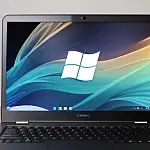Zalman Notebook Cooler ZM-NC2000 Review and BenchmarkZalman is well known for its cooling products so when I needed a Notebook Cooler they were the first company I looked up.
Zalman is well known for its cooling products, I have been using them for several years now, so when I needed something to keep my laptop cool they were the first company I looked up.
Notebook Cooler Construction
The Notebook Cooler is large enough to hold my Pavilion DV7 and also acts as a keyboard riser making typing more comfortable. Construction is of thick aluminium which is naturally cold to the touch. It is powered by a spare USB port on the laptop, the Zalman Notebook Cooler fan is loud enough to be heard, but much quieter than the laptop fans when they spin up so the overall noise is reduced considerably. The ZM-NC2000 features an additional USB port so you do not lose out on the number of ports. The surface is made from aluminium to conduct heat more effectively, while the underside is plastic.
There is an on/off toggle button as well as a dial to control the fan speed. On maximum setting, it can be quite loud, but I found about 30% sufficient to keep the laptop fans off under moderate usage. For gaming, I turn it up to around 75% which is still quieter than the laptop fans spinning up.
ZM-NC2000 Notebook Cooler Performance Table
The table below shows the difference between no cooler, passive cooling (fans off) and active cooling (fans on 50%). Temperatures measured with SpeedFan 4.49
| Test | Temp CPU | Temp GPU | Temp HDD | Temp Core |
|---|---|---|---|---|
| Idle (no cooler) | 46°C | 46°C | 32°C | 46°C |
| Load (3DMark11) (no cooler) | 89°C | 90°C | 36°C | 90°C |
| Idle (passive cooler) | 41°C | 41°C | 33°C | 40°C |
| Load (3DMark11) (passive cooler) | 57°C | 57°C | 34°C | 56°C |
| Idle (active cooler) | 38°C | 42°C | 32°C | 38°C |
| Load (3DMark11) (active cooler) | 54°C | 53°C | 32°C | 55°C |
These results certainly speak for themselves and show the Zalman Notebook Cooler ZM-NC2000 is effective in providing additional cooling for laptops. Highly recommended in my view, although this only works well for laptops which have an intake air vent in the base. If the intake vents are on the back or sides then this is likely to do little to aid your temperatures and noise levels.













